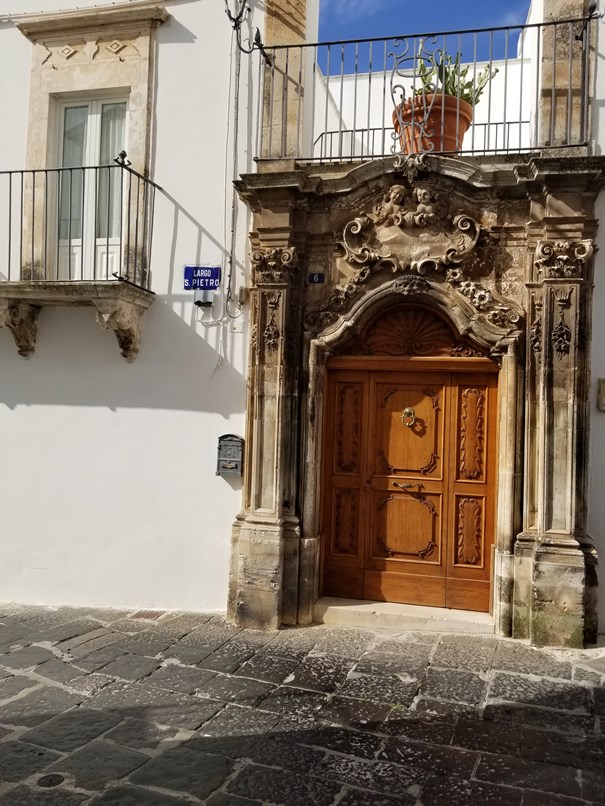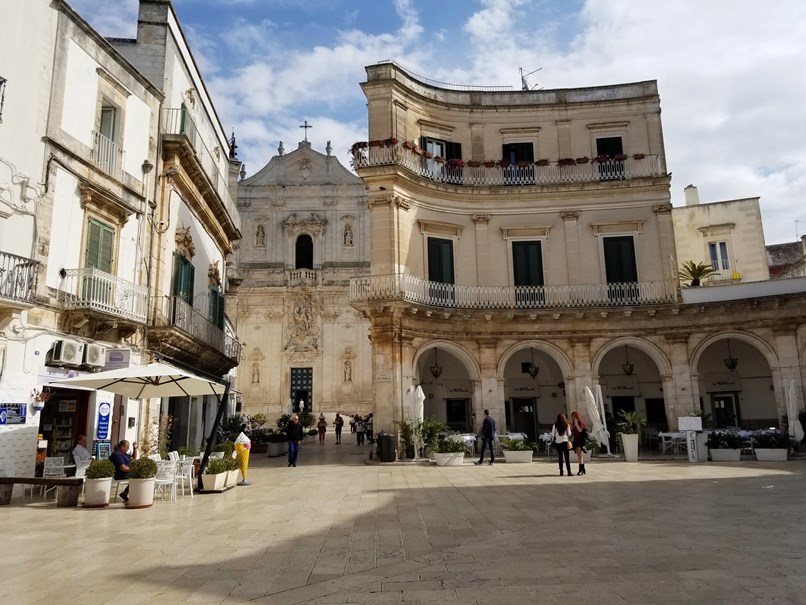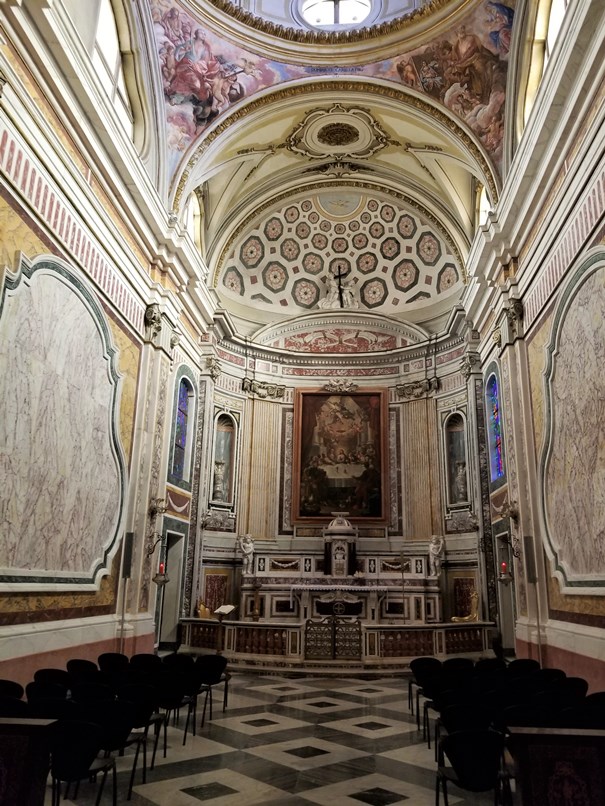Martina Franca and Alberobello
Martina Franca is a sparkling jewel situated in the Puglia region in the heel of Italy. It retains all of the old-world appeal of a small, traditional, Italian town.



17thCentury Baroque palazzos, sculpted archways, elaborate wrought-iron balconies, and intricately adorned doorways bearing centuries-old family crests, flank the narrow Strade pedonali.



Laundry flaps in the light breeze beside Baroque front doors, neighbors lean over white stone balconies to greet one another. In the tiny bakery, the locals engage in animated conversazione while lining up to make their purchases of hot crusty bread. The aroma of the freshly baked bread is mouthwatering and irresistible.


Piazza Plebiscito bathed in the gentle autumn sunshine beckons one to linger awhile over a midmorning cappuccino, and absorb the vibe of the theatre of life in this quintessential Italian piazza.

Steps away from Piazza Plebiscite stands the Rococo style Basilica di San Martino dedicated to the patron Saint Martino of Tours. The interior boasts exquisite multicolored marble walls, floors, and altars.


Palazzo Ducale is a grand palazzo built in the 17th Century for the Caracciolo family. It incorporates elements of both Renaissance and Baroque design.
Today the exquisite interior of the palazzo is open to visitors and functions as a government office.


The drive from Martina Franca to Alberobello takes one along lanes that snake through the countryside past vines, olive groves, stone walls, and ancient beehive-shaped trulli.


The earliest trulli date back to the 14th Century when they functioned as storage shelters and dwellings for farmers.

Onwards to Alberobello – a fittingly melodious and romantic sounding name for a romantic town, which translates to ‘beautiful tree.’ Over 1,000 trulli snuggle together in the cobblestone streets of Alberobello.

Built from roughly worked limestone boulders, and rocky outcrops found in the surrounding countryside, the circular dwellings are capped by conical-shaped roofs made of grey stone slabs, topped by decorative pinnacles. The sloping beehive design allowed snow and rainwater to flow into a well below the trullo.

It was also common for the roofs to be adorned with symbols painted in whitewash, which bore pagan, religious, or astrological significance.

The trulli were constructed without the use of mortar, which meant that they could be quickly dismantled, thereby evading the tax on new dwellings (imposed primarily in the early 17th Century) when the tax inspectors of the King of Naples came calling.

Spend a day wandering among the trulli and exploring this most unusual town. Pop into the little stores that sell local crafts. My favorite is Tessitura Pasteca la Madragora. A fabric and linen store, which has been in the same family for several generations. Their high-quality tablecloths, bed linens, towels, and napkins, fuse patterns with symbolism that is special to “Alberobellans.” The Olive represents peace, Wheat – fertility, Grapes – abundance.



Stay overnight in a traditional trullo. We stayed in the Tipico Resort (the name resort is misleading; it’s merely a cluster of trulli). I would highly recommend Tipico. Their trulli are decorated with inimitable Italian design and flair and offer every comfort.



Diclosure: The photos of the Palazzo Ducale were not taken by me.
